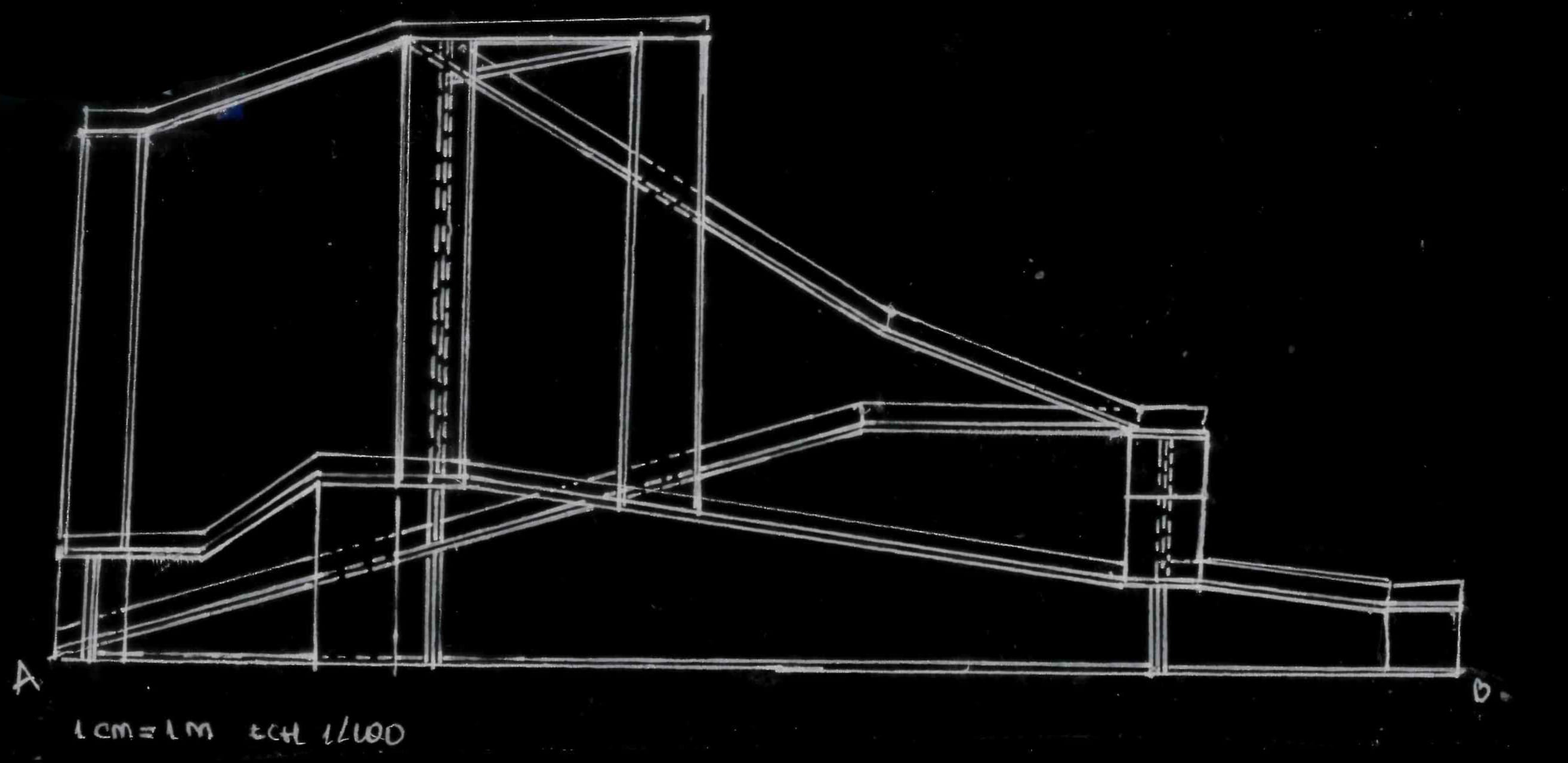Structure plays
Light - Heavy
















Licence 1, 2nd Semester
February 2025
Coordinating professor: Joanne Vajda
The two-week exercise explored the Light/Heavy concept. Using
diverse references, we tested different approaches to express
weight and perception.
Skywalks:
Starting from a material as heavy and inert as concrete,
how can architecture become light enough to disappear or float?
The project explores this paradox through a series of elevated
pathways above a lake, designed to allow it to be crossed. By
varying their heights, some of the structures appear to submerge
into the water, creating the illusion of walking directly upon its
surface, while others hover above it. This interplay between
immersion and suspension invites reflection on the notions of
weight and weightlessness.
TENT:
This project engages with the paradox between reality and
perception. The metal and glass that form the dome appear
weightless, allowing light to permeate the space, even though they
are materially much heavier than the compressed earth bricks that
compose the solid base supporting the structure and casting
shadows beneath it.
Future ecosystems:
Inspired by Haus-Rucker-Co’s inflatable
architecture, this project explores a quasi-immaterial form: a
metallic, articulated framework that allows movement and supports
a system of spheric and tubular elements composed of a thin
pneumatic membrane. Within it unfold vast, indeterminate interior
spaces, light and open in both form and function. The notion of
lightness emerges from the absence of unnecessary boundaries;
instead, a vast and transparent membrane appears to float in the
air.
Monolith/Assembly















Licence 1, 2nd Semester
March 2025
Coordinating professor: Joanne Vajda
The two-week exercise challenged our understanding of the
Monolithe/Assembly concept. Using various references, we
experimented with different approaches in an expressive manner.
The Void:
Inspired by OMA’s “Tres Grande Bibliothèque,” I
experimented with assembling the non-existent. While assembly is
usually seen as the addition of elements, I subtracted from a
monolith, assembling the void in space. To visualize it, I first
created a “reverse” model where the void became physical and the
physical became void, allowing me to organize forms in space. This
initial model then served as a mold for the second version.
Scaffolding:
Influenced by Yona Friedman’s theory of spatial
cities, I treated scaffolding as an opportunity to explore modular
and evolutive architecture. Within a permanent grid, different
forms can be inserted or substracted, generating an infinite
number of configurations.
Deformation:
Cedric Price’s flexible architecture in Fun Palace
inspired my third project. Starting from a monolithic cube, I
explored methods of deconstructing and reassembling it. By
fragmenting the cube, I connected the pieces through a system of
rotational joints, allowing movement and generating an infinite
variety of forms depending on their configuration.